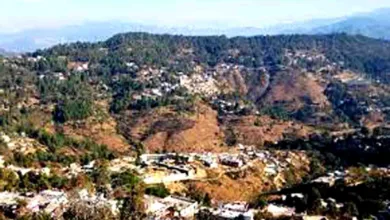Understanding the Earth’s carrying capacity

GUEST COLUMN
 Govind Singh Rajwar
Govind Singh Rajwar
In 1972, the UN General Assembly designated June 5 as World Environment Day (WED). The first celebration, under the slogan “Only One Earth” took place in 1974. In the following years, WED has developed as a platform to raise awareness on the issues facing our environment like pollution, illegal wildlife trade, sustainable utilisation of resources, rise in sea level and food security among others. The theme for the World Environment Day 2021 is “Ecosystem Restoration” and will see the launch of the UN Decade on Ecosystem Restoration (2021-2030). Ecosystem restoration means assisting in the recovery of ecosystems that have been degraded or destroyed, as well as conserving the ecosystems that are still intact, and this could be achieved by growing trees, greening cities, creating biodiversity parks, cleaning up rivers and coasts and by saving the green cover on the earth. From 2010 to 2030, the restoration of 350 million hectares of degraded terrestrial and aquatic ecosystems could generate US$ nine trillion in ecosystem services. The restoration process could also remove 13 to 26 gigatonnes of greenhouse gases from the atmosphere. We must consider the first slogan- “Only One Earth” used for WED in 1974 to understand the current pressure on the planet. How so many people can sustainably live and use the resources with sustainable technologies without harming the existence of the earth itself?
The earth is overcrowded and under pressure for extraction of its valuable resources. There are air and water pollution, soil deterioration and floods threatening our safety. It is hard to visualise the limits to the planet’s natural resources when standing at the edge of an ocean or the top of a mountain, looking across the vast expanse of earth’s water, forests, grasslands, lakes or deserts. We are now 7.9 billion people with annual growth of around 83 million or 1.1%. So many people now inhabit the earth with so much impact that scientists have coined a new word to describe our time, the Anthropocene Epoch, which explains the escalating human influence on the environment of the earth. The release of CO2 into the atmosphere is beginning to alter the global climate. Species are going extinct at a rate 100 to 1,000 times above the natural rate. The scale of human appropriation of the products of photosynthesis—the most fundamental process of the biosphere—has reached around one-quarter to one-third of all global Net Primary Production (the rate of production of organic compounds by the green plants).
After roughly 1,00,000 to 2,00,000 years of modern humans remaining at very low numbers (and with a very minimal impact on the planet), our numbers began to grow around 4,000 years ago. That growth began to accelerate over the centuries until we were adding more people each year than had ever lived on earth at one time prior to 500 BCE. While global population has doubled since the 1960s, per capita GDP has grown to more than 10 times what it was then. Per capita income for millions in the developing world including India and China is growing rapidly, creating enormous demand for material goods and services. Life expectancy has also increased globally —by almost 20 years. That puts twice as many people on the planet, living about 40 per cent longer and each person consuming many times what the average person in the 1960s did. Most developing economies are striving to close the gap between their living standards and those of developed economies. It has been estimated that if everyone lived the lifestyle of the average American we would need five planet earths to provide the needed land, ecosystem goods and services. Living standards and consumption need not be directly equivalent to environmental impact. Since population is a multiplier of per capita impact, the technological advances in efficiency can be a divisor of per capita impact.
A number of estimates have been made as to how many people the planet earth could support, which is termed as its carrying capacity. These estimates of limits of human population on earth vary dramatically. A number of studies are based on the available food. One method assumed a set of multiple possible constraints (say food, water and fuel), and whichever of these was in shortest supply would set the limit of population. The degree to which humankind can change its interaction with the environment through technology cannot be foreseen. For example, availability of fossil fuels affects food production through fertiliser production, pumping of irrigation water, use of farm machinery and so on for which we depend on natural gas. We do not know how much CO2 can be released into the atmosphere before it may cause an abrupt change in the environment, and how much rise in surface temperature there could be before the Antarctic ice sheets would be at risk of collapse. It is also difficult to measure how much food, medicine, heat, clothing, shelter and water we require for each future inhabitant. In the early 1970s a group of computer scientists at the Massachusetts Institute of Technology developed a model to define safe limits to our impact on the earth system and found that earth’s economic system tends to stop growing and collapse from reduced availability of resources, overpopulation, and pollution at some point in the future.
Most mainstream economists acknowledge that resources are limited but assume that technology will continue to increase our efficiency in utilising those resources. Footprint occurs when humanity turns resources into waste faster than waste can be turned back into resources. Fossil fuels which took hundreds of millions of years to form are being utilised at rates far beyond the earth system’s capacity to replace them. According to Wackernagel and co-workers, humanity uses the equivalent of 1.5 planets to provide the resources we use and absorb our waste which means it now takes the earth one year and six months to regenerate what we use in a year.
(A fellow of Linnean Society of London, the author is a former principal & professor of botany who has also researched the ecology of the Himalaya & other mountain ranges)






